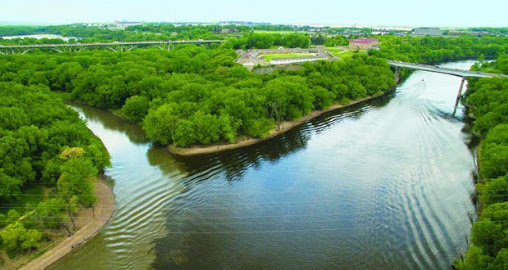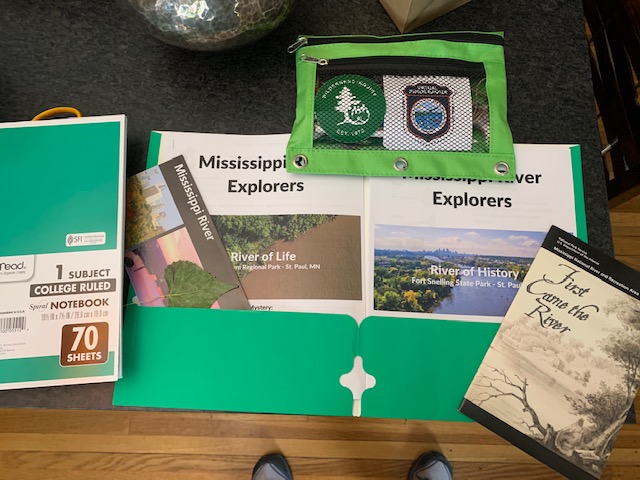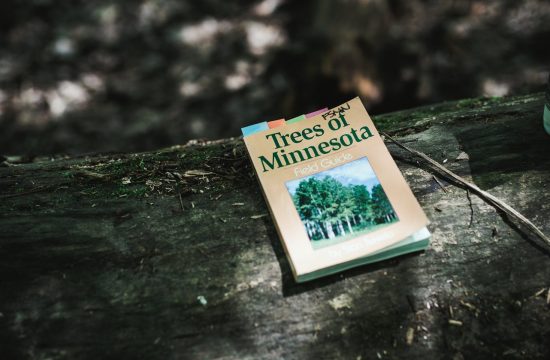
At the end of October, middle school students joined the Mississippi River Youth Explorers Program to pilot their first year of virtual field trips.
It is a joint effort between Wilderness Inquiry and the National Park Service, two organizations we have worked with very closely over the years.
This year we joined the Park Service virtually at four locations. The ability to explore four places in one week was a unique opportunity.

The First Day – Crosby Farm
The first virtual trip was to Crosby Farm, a location beloved to Friends School. Friends School students have planted many of the trees in the floodplain forest they learned about during the field trip. The staff included seven professionals from the National Park Service, the US Forest Service, and Wilderness Inquiry. The presentation was multi-media and included live coverage of the floodplain forest, lectures from professionals, slideshows, videos, and close-up views of many of the species that live in the park.
We explored a variety of subjects, including, climate change, the emerald ash borer and the life cycle of mussels.
A variety of new trees are being planted in different areas of the park. They are part of three different experiments studying the impact of climate change:
- Resistant plots (replanting what is here today like silver maple, catalpa)
- Resilient plots (other MN floodplain trees like willow and swamp oak)
- Transition plots (planting trees that are found further south: tulip poplar, sycamore, pecan)
We learned about how the emerald ash borer came to Minnesota. We discussed the blonding of ash trees and how the insect eventually kills trees. We also learned about the life cycle of the mussels in the Mississippi River and how they are used as one of the first steps in water filtration for our drinking water.
Get creative – Make a leaf collage.
The Second Day – Cold Water Springs
Cold Water Springs is a prairie restoration site near Minnehaha Falls and Minnehaha Dog Park.
FSMN History With This Section of the Park
We have a long history with this section of the park. We were some of the first students to plant, water and mulch oak trees in the oak savannah and to throw seed pods into the prairie. Our hard work is evident, and we should be really proud of the work we have done.
We explored prairie types and adaptations. We thought about how a prairie habitat is beneficial for rivers. We also talked about how prairies have been drained for farming and how it is causing environmental problems.
An activity – Make your own bird feeder.
The Third Day – Fort Snelling State Park at Steamboat Springs and Pike Island
At Fort Snelling State Park we explored some guiding questions for the day:
Why was the confluence area (Bdote) the chosen site to build the first fort in the Northwest Territory?
Why was/is this land so important to Native (Dakota and other) peoples?
We learned that Fort Snelling is located on native Dakota land. The Dakota believe that life was created at Bdote. It is an area rich with water and food and it is considered the heartland of the Dakota Nation.
We also learned about:
- the geologic history of the land and how humans migrated to the area.
- how the Dakota lived on the land and adapted their life for each season.
- the history of the fur trade and the unfair treaties that benefited the fur traders and the American government at the expense of the Dakota.
Learn more…
Learn about the native land you are living on.
Explore the Bdote memory map.
The Fourth Day – Saint Anthony Falls
At Saint Anthony Falls we learned about:
- the geology of the region and how a waterfall can move.
- how the Twin Cities grew up around this area and became an important area for business.
- the giant beaver that lived in the region during the Pleistocene.
We explored the question, “how am I connected to the Mississippi River?”
An activity – how rivers change a landscape


